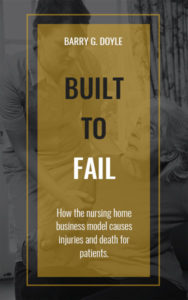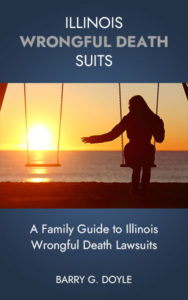The Illinois Department of Health has cited and fined Aliya of Oak Lawn when a certified nursing assistant pushed a resident too hard while turning her during care, causing the resident to fall from the elevated bed and suffer a femur fracture that rendered her non-weight bearing for at least 12 weeks. The facility failed to provide proper safety equipment, including requested side rails, and failed to properly investigate the incident, incorrectly attributing the fall to the resident’s diagnoses rather than the staff member’s actions.
This case involves a resident who sustained a serious injury while receiving care in her room. According to the resident’s account, she was being changed by a certified nursing assistant (CNA) when the CNA “pushed [her] too hard and [she] fell to the floor.” The resident reported that the fall happened so quickly that she “did not have time to put her hands in front of her to prevent face from hitting floor.” She explained that the CNA had “raised the bed up higher before providing care,” which likely increased the risk and severity of the fall.
As a result of this fall, the resident suffered significant injuries, including “bruising to both arms and left leg, bruising and a lump above right eyebrow, and significant pain to left knee.” Hospital records confirmed the extent of her injuries, noting she had “a left condylar fracture with extension to the lateral femur metaphysis” and “a large lipohemarthrosis with hematoma measuring 7.5cm x 3.5cm x 2.2cm” as well as a “hematoma to forehead.” The resident was found to be anemic and required a blood transfusion during her hospitalization.
The resident stated that prior to this incident, she “was able to stand with assistance,” but following the fall, she became “nonweight bearing on left leg for at least 12 weeks.” According to her family member, this injury “has set [her] back at least six months” in terms of her recovery and functioning.
Notably, the resident reported that she had “requested side rails upon admission” months earlier but was told that “someone from therapy would assess her to see if side rails were appropriate for her.” However, she stated that “nobody ever did” conduct this assessment. The resident believed that “if she had side rails she could have possibly prevented or slowed down the fall.” Observations of her room confirmed that she had “no handle on [her] mattress” to hold onto when being turned by staff, despite the CNA reportedly instructing her “to hold onto the bed when turned.”
The facility’s account of the incident differed significantly from the resident’s. According to the facility’s investigation, the CNA stated that while “providing ADL care” and rolling the resident “over to her right side, [the resident] reached for an object on her bedside table and slid off the bed.” This version does not mention the CNA pushing the resident too hard or raising the bed height before providing care.
Further undermining the integrity of the facility’s response, the restorative nurse indicated that the facility had determined the “root cause of [the resident’s] fall was due to diagnoses of adult failure to thrive, anxiety disorder, fluid overload, and the need for extensive assistance with bed mobility.” When asked to clarify this assessment, the nurse responded, “I guess the root cause was determined to be due to [the resident’s] diagnoses and functional abilities” – effectively placing the blame on the resident’s medical conditions rather than examining staff actions.
Medical records indicate the resident has multiple serious health conditions, including “displaced fracture left femur, hemarthrosis left knee, metabolic encephalopathy, moderate protein-calorie malnutrition, liver transplant, critical illness myopathy” and several other conditions. Her Minimum Data Set assessment notes she “is totally dependent on staff for bathing, toileting, and personal hygiene,” highlighting her vulnerability and reliance on proper care.
Interestingly, a side rail review conducted weeks after the incident noted the resident “is appropriate to have 1/4 side rails to aid with bed mobility” – the very accommodation she had requested months earlier but never received.
One of our core beliefs is that nursing homes are built to fail due to the business model they follow and that unnecessary accidental injuries and wrongful deaths of nursing home residents are the inevitable result. Our experienced Chicago nursing home lawyers are ready to help you understand what happened, why, and what your rights are. Contact us to get the help you need.


